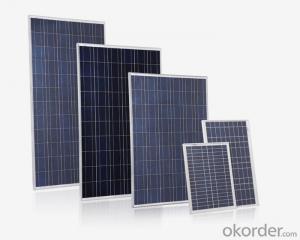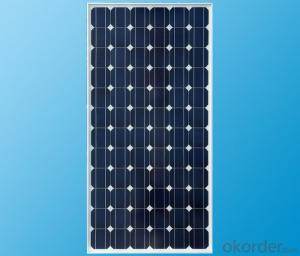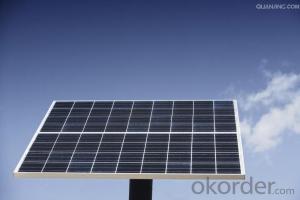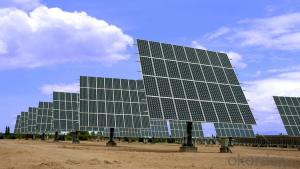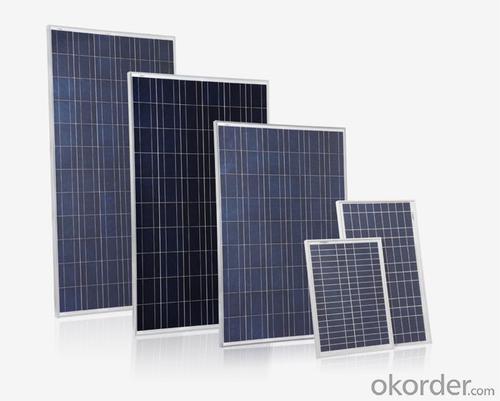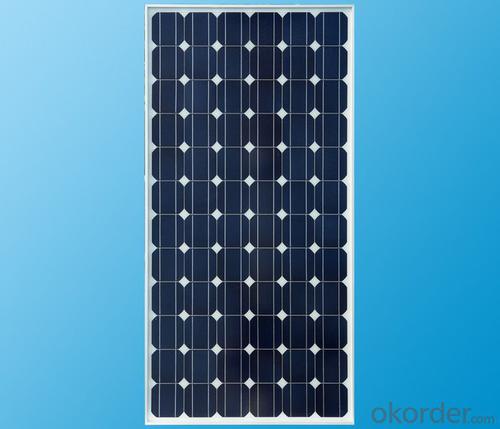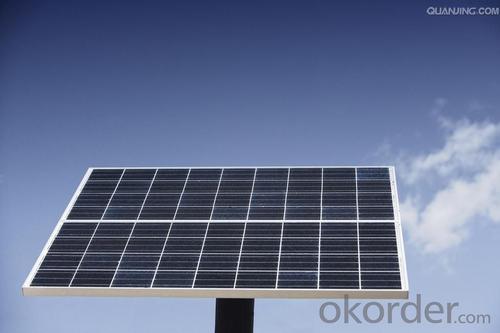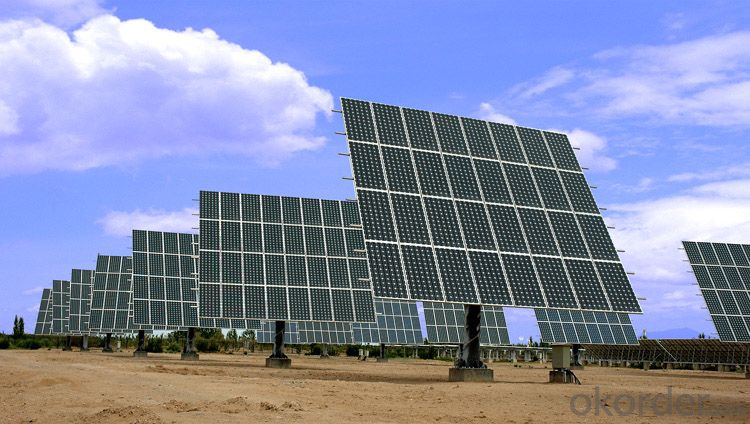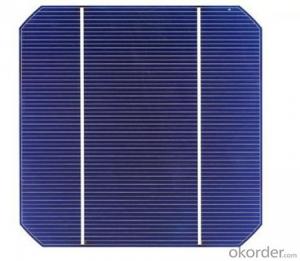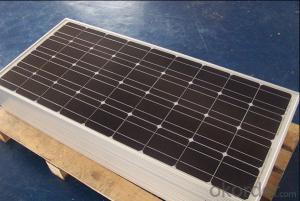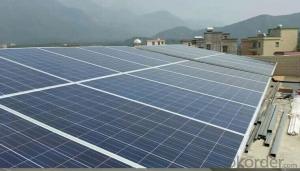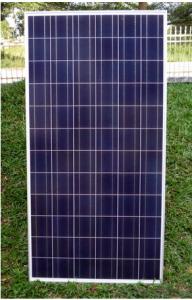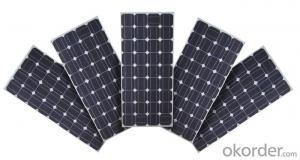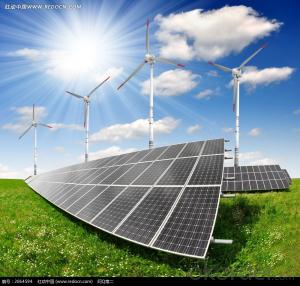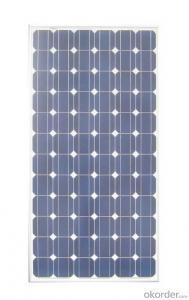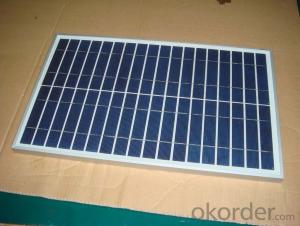Qd Solar Cells Favorites Compare Poly Solar Panel 280W-300W with 156*156 Solar Cell for Solar Power System
- Loading Port:
- China Main Port
- Payment Terms:
- TT OR LC
- Min Order Qty:
- -
- Supply Capability:
- 10000000000000 watt/month
OKorder Service Pledge
OKorder Financial Service
You Might Also Like
Quick Details
| Place of Origin: | Guangdong China (Mainland) | Brand Name: | CAP | Model Number: | 50w100w150w200w250w300w |
| Material: | Monocrystalline Silicon | Size: | 1385*1035*75mm | Number of Cells: | 72pcs |
| Max. Power: | 300w | type: | solar panel | color: | blue&black |
| warranty: | 5 years |
Packaging & Delivery
| Packaging Detail: | standard export package for solar panel |
| Delivery Detail: | 7-15 days for solar panel |
Specifications
solar panel
High Efficiency
25 years Warranty
High-transmissivity low-iron tempered glass
Solar Panel
50w100w150w200w250w300w
Characteristics
1,High and stable conversion efficienly based on over 4 years professional experience
2 ,High reliability with guaranteed +/-10% output power tolerance
3,Proven materials,tempered front glass,and a sturdy anodized aluminum frame allow modules to operate reliably in multiple mountily configurations
4,Combination of high efficicncy and attractive appearance
Quality and Safety
1,25 year 80%,10 year 90% power warranty 3 year power warranty
2,ISO9001:2000 (Quality Management system) certified factory
3,Product Quality warranty & products Liability Insurance to guarantee and user' benefits
4,Certifications TUV Intercert, CE Temperature Coefficients
| Module Type | 100w | 150w | 200w | 250w | 300w |
| Maximum Power at ST(Pmax)W | 100wp | 150wp | 200wp | 250wp | 300wp |
| Maximum Power Voltage(Vmp)V | 36/18 | 36/18 | 36/18 | 30.8v | 36/18 |
| Maximum Power Current(Imp)A | 2.77/5.55 | 4.16/8.33 | 5.55/11.1 | 8.11A | 8.33/16.66 |
| Open Circuit Voltage(Voc)V | 39.5/19.05 | 39.3/19.4 | 39.6/19.5 | 36.2V | 39.6/19.8 |
| Short Circuit Current(Isc)A | 3.04/6.09 | 4.58/9.16 | 6.1/12.2 | 8.7A | 9.16/18.33 |
| Cell Efficiency(%) | 18.60% | 18.10% | 18.60% | 17.80% | 18.10% |
| Module Efficiency(%) | 17.70% | 17.20% | 17.70% | 17.10% | 17.20% |
| Operating Temperature°C | -40°C to +85°C | -40°C to +85°C | -40°C to +85°C | -40°C to +85°C | -40°C to +85°C |
| Maximum system voltage | 1000V(IEC)DC | 1000V(IEC)DC | 1000V(IEC)DC | 1000V(IEC)DC | 1000V(IEC)DC |
| Power tolerance | -0.03 | -0.03 | -0.03 | -0.03 | -0.03 |
| Temperature coefficients of Pmax | -0.45%/°C | -0.45%/°C | -0.45%/°C | -0.45%/°C | -0.45%/°C |
| Temperature coefficients of Voc | -0.27%/°C | -0.27%/°C | -0.27%/°C | -0.27%/°C | -0.27%/°C |
| Temperature coefficients of Isc | 0.05%/°C | 0.05%/°C | 0.05%/°C | 0.05%/°C | 0.05%/°C |
| Weight(kg) | 8 | 11 | 14 | 20 | 25.5 |
| Number of cell(pcs) | 4*9 | 4*9 | 6*10 | 6*12 | 6*12 |
| Dimensions(mm) | 1194*534*35/30 | 1580*808*50/35 | 1471*670*40/35 | 1640*992*50 | 2000*1050*50 |
- Q: How long does it take for solar cells to pay for themselves?
- The payback period for solar cells can vary widely depending on factors such as the initial cost of the system, local energy prices, available incentives, and the amount of electricity generated. On average, it can take anywhere between 5 to 15 years for solar cells to pay for themselves through energy savings and potential government incentives.
- Q: What is the efficiency of solar cells?
- The efficiency of solar cells can vary, but on average, it ranges from around 15% to 20%. However, some advanced solar cell technologies can achieve efficiencies of up to 40%.
- Q: Can solar cells be used to power satellites?
- Yes, solar cells can be used to power satellites. In fact, solar cells are the primary source of power for most satellites orbiting the Earth. They convert sunlight directly into electricity, providing a reliable and renewable energy source for the electrical systems on board the satellite.
- Q: How do solar cells perform in areas with limited space for installation?
- Solar cells can still perform efficiently in areas with limited space for installation through the use of innovative technologies such as rooftop and building-integrated photovoltaics. These systems maximize the use of available space, allowing solar cells to generate electricity even in compact urban environments. Additionally, advancements in solar cell design and efficiency have made it possible to produce more power from smaller areas, further optimizing electricity generation in limited spaces.
- Q: How do solar cells handle electrical noise or interference?
- Solar cells do not directly handle electrical noise or interference. However, solar cell systems often include components such as inverters or power conditioning units that help mitigate electrical noise or interference by converting the direct current (DC) produced by the solar cells into alternating current (AC) that is more resistant to noise. Additionally, proper grounding and shielding techniques can be employed to minimize any potential interference from external sources.
- Q: Can solar cells be used to power water treatment plants?
- Yes, solar cells can be used to power water treatment plants. Solar energy can be converted into electricity using photovoltaic technology, which can then be utilized to power the various systems and processes involved in water treatment, such as pumps, filters, and disinfection systems. Solar power offers a sustainable and environmentally friendly solution for powering water treatment plants, particularly in areas with abundant sunlight.
- Q: How's the feedback of using 260 watt photovoltaic solar panel? Anybody ever used that?
- Our 260 watt photovoltaic solar panel has the highest quality, and you will always find out the positive feedback online about us.
- Q: How do solar cells impact job creation?
- Solar cells impact job creation by creating a demand for skilled workers in the solar industry. As the adoption of solar energy grows, more jobs are created in manufacturing, installation, maintenance, and research and development of solar cells. This not only helps stimulate the economy but also provides employment opportunities for individuals in a rapidly expanding sector.
- Q: Can solar cells be used for powering electronics?
- Yes, solar cells can be used for powering electronics. Solar cells convert sunlight into electricity, which can then be used to power various electronic devices such as calculators, phones, laptops, and even larger systems like solar-powered homes or streetlights.
- Q: Can solar cells be used in powering remote weather stations?
- Yes, solar cells can be used to power remote weather stations. Solar cells are a sustainable and efficient way to generate electricity, making them ideal for remote locations where access to grid power is limited. They can provide a reliable source of power for weather stations, allowing them to operate continuously and gather data even in remote areas.
Send your message to us
Qd Solar Cells Favorites Compare Poly Solar Panel 280W-300W with 156*156 Solar Cell for Solar Power System
- Loading Port:
- China Main Port
- Payment Terms:
- TT OR LC
- Min Order Qty:
- -
- Supply Capability:
- 10000000000000 watt/month
OKorder Service Pledge
OKorder Financial Service
Similar products
Hot products
Hot Searches
Related keywords
